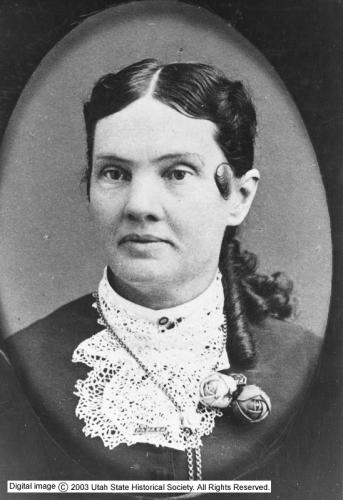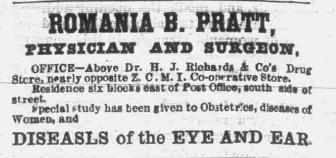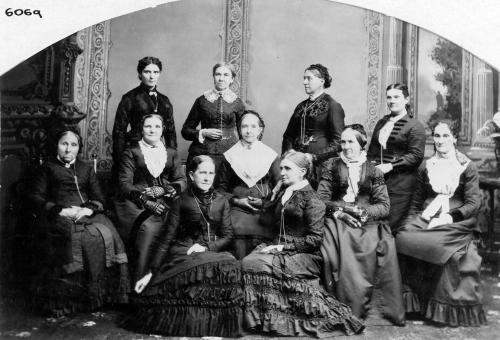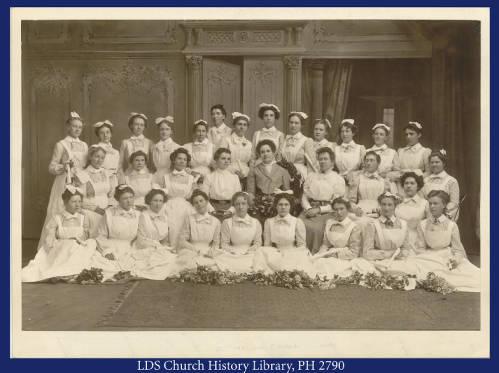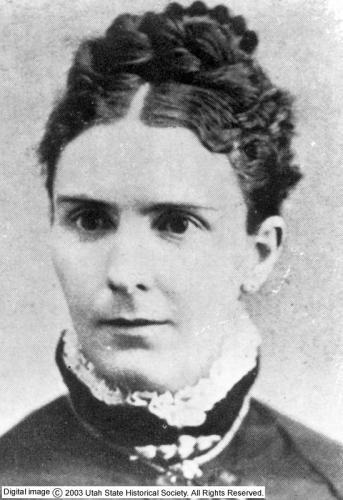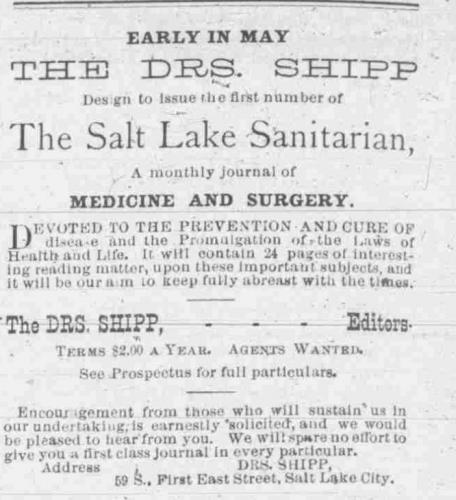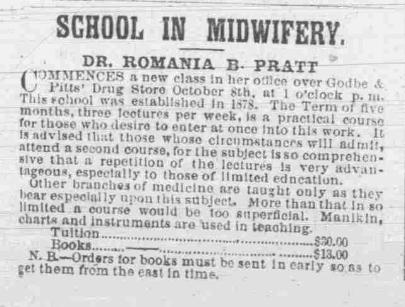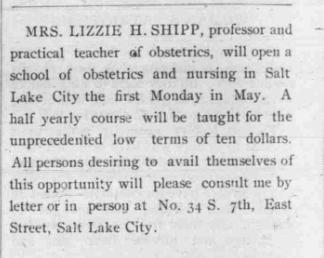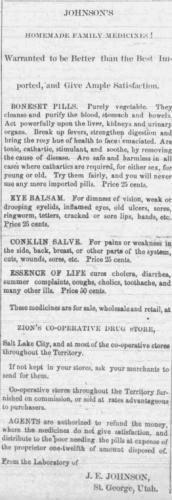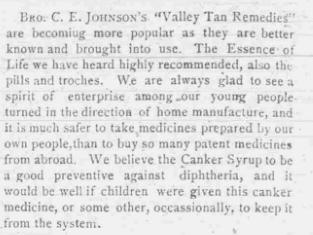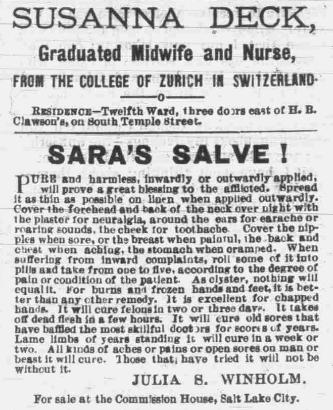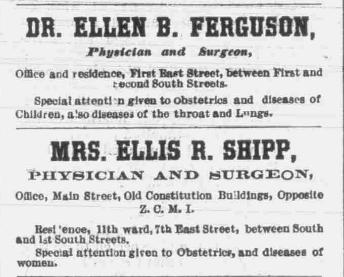Women and Medicine
Woman’s Exponent articles and advertisements document a shifting point of view towards medical education and the involvement of women in medicine in the late 19th century. Many early Latter-day Saint leaders adhered to the theories of Thompsonian medicine, which relied on herbal treatments and urged restraint for the consumption of beverages such as alcohol, coffee, and tea. Samuel Thompson’s teachings influenced doctors who were associated with Joseph Smith, such as Frederick G. Williams and Dr. Willard Richards.[1] While Brigham Young originally endorsed home remedies and herbs he began actively encouraging Church members to seek formal training in medicine beginning in 1879. An initial push for men to study medicine was followed by a call for women to get formal training in 1873. Historian Thomas S. Simpson writes, “Brigham thought that having trained female doctors in the church would help Mormon women preserve their modesty, by eliminating the need for medical treatment from outside male doctors. He hoped that by encouraging higher education for women, he could weaken outsiders’ political criticisms of Mormon patriarchy.””[2]
In an address delivered on August 14, 1873 that was reprinted in Woman’s Exponent, Eliza R. Snow discussed this push to educate women:
President Young is requiring the sisters to get students of Medicine. He wants a good many to get a classical education, and then get a degree for Medicine. So far as getting the degree is concerned, there would be no advantage, but in connection with the degree, the female practitioner stands on the same grounds a man does. Are there here, now, any sisters who have ambition enough, and who realize the necessity of it, for Zion's sake, to take up this study.[3]
The first woman to answer the call to study medicine was Romania B. Pratt. She attended medical school in Pennsylvania, leaving her five children temporarily in the care of her mother.[4] Woman’s Exponent printed an announcement of her graduation from medical school in 1877 (see below). In her studies, Pratt focused on the eye and ear, in addition to obstetrics. Her area of specialty can be seen in the advertisements for her medical practice that were subsequently placed in Woman’s Exponent. In a September 1, 1893 article summarizing Woman Journalism in Utah, Pratt is described as someone who "writes not only scientific articles, but is also an efficient and comprehensive writer upon all practical subjects, and possesses excellence of taste in style and correctness of diction.”[5]
Information about medical education and information can also be traced through the pages of the Woman's Exponent. Women doctors frequently ran advertisements for classes in midwifery and nursing. Woman's Exponent advertised and featured an article about The Salt Lake Sanitarian, a journal developed by "The Doctors Shipp." (Issues of the The Salt Lake Sanitarian can be viewed at the HathiTrust). Ellis and Maggie Shipp were both married to Milford Bard Shipp, who obtained a medical degree shortly after his wives became doctors in order to publish a health magazine. [6] Dr. Ellis Shipp was a frequent contributor to the Woman's Exponent, and the paper reported on the results of her classes.
At the same time that women were seeking formal medical training, many readers of Woman’s Exponent continued to rely on folk remedies and practices. The paper would occasionally feature articles that testified to the effectiveness of a particular approach or medicine, such as Johnson’s Homemade Family Medicines. These articles were often in the service of those who advertised with the paper. The article comments, "We are always glad to see a spirit of enterprise among our young people turned in the direction of home manufacture, and it is much safer to take medicines prepared by our own people, than to buy so many patent medicines from abroad."
Other advertisements show information about medical experts printed alongside patent remedies, as seen in the ads for Susana Deck, midwife and nurse, printed with an ad for Sara's Salve, a remedy for almost any ailment.
Sources consulted:
3) Eliza R. Snow. "An Address." Women's Exponent (1873): 6, 7.
4) Shana Montgomery. "Esther Romania Bunnell Pratt Penrose (1839–1932): An Uphill Climb." Worth Their Salt Too: More Notable But Often Unnoted Women of Utah, ed. by Colleen Whitley. (University Press of Colorado, Utah State University Press, 2000) , 33. https://www.jstor.org/stable/j.ctt4cgpjz.5
5) "Woman Journalism in Utah", Woman's Exponent, (1893) https://newspapers.lib.utah.edu/details?id=23726092
6) Sherilyn Cox Bennion. "The Salt Lake Sanitarian - Medical Adviser To The Saints." Utah Historical Quarterly 57 no 2. (1989 . https://collections.lib.utah.edu/details?id=422738
To cite this webpage, use the following citation:
Neatrour, Anna. “Women and Medicine.” Woman’s Exponent Project, 2019. https://exhibits.lib.utah.edu/s/womanexponent/page/women-and-medicine.
Photos on this page courtesy Utah State Historical Society, used with permission.


